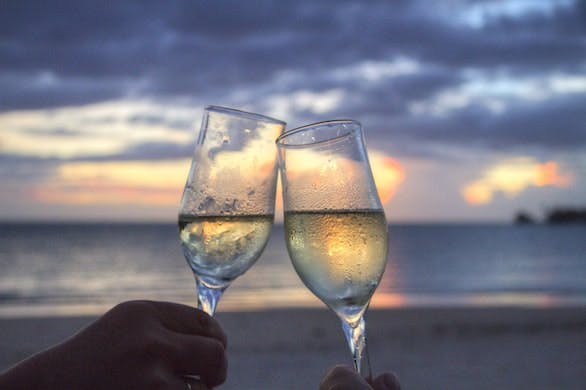Why Not Just Any Sparkling Wine Can Be Called Champagne
Champagne is valued an average of 33 percent higher than any other sparkling wine. Few people are willing to pay $50-plus for a bottle of generic French sparkling wine.

“If it’s not from the Champagne region of France, then it’s just sparkling wine”: This old idea, with accompanying spin-off memes, is all over the internet these days. A lot of people have been asking what the joke is. The answer is both simple and a bit complicated.
Champagne is so ubiquitous that many casually refer to all sparkling wine as such, and this has been going on for centuries. For the French and especially the Champenoise, though, Champagne is a place and the name of the products produced only there.
This is the very French ideal of terroir, and it has been codified into law under France’s Appellation d’Origine Contrôlé system. An appellation is a delineated area and the AOC system a set of protectionist measures where every wine or food product with the name of a French place attached to it must follow standards to ensure the expected style is met and its provenance secured.
In order for Comté cheese from Jura to be labeled “Comté,” every cow must be touched by a farmer twice a day. While this seems a little ridiculous on paper, its intention is to help farmers have a better sense of the health of their animals. This in turn is supposed to help guarantee the quality of the finished cheese and the reputation of the region as a whole.
Champagne is famous for having the tightest controls of any wine and for going to great lengths to protect its reputation. Normal European rules like which grape varieties can be grown in which geographic areas, at what elevations, inclines, and aspects, are just the beginning. Examples include only four acceptable methods of pruning to control quality and yields. They dictate the exact amount of juice allowed to be pressed from a set of grapes that can be used for making Champagne (25.5 hL/4,000kg), along with the specific types of presses. This guarantees only the highest quality materials are used; the rest must go toward other purposes, like Ratafia or distillation. Uniquely for France, they do allow the blending of red and white wine to make rose, but the list just goes on and on.
The Comité Interprofessionnel du vin de Champagne monitors farmers and producers to ensure the rules are met. Defying them declassifies the wine, meaning “Champagne” is removed from the label. That’s a costly move for all involved, as Champagne is valued an average of 33 percent higher than any other sparkling wine. Few people are willing to pay $50-plus for a bottle of generic French sparkling wine.
Those who try to add the word Champagne to their bottles of bubbles outside of the region are in breach of international law. The CIVC will defend the name in court and can afford to do so. There are notably a few exceptions, like Korbel Champagne of California, established in 1882. Its name was grandfathered in, having been around since before the AOC system was established in 1937.
When you request Champagne, some wine professionals may ask you to clarify if that is what you really want before presenting you with a list of expensive bottles. One of the best approaches to getting the wine right for you is to ask for a bottle of sparkling wine and a range of what you are willing to spend. You can add on style preferences like sweet or dry, fruity or mineral, aged or fresh.
Alternatives are readily available in most places: Cremant from France, Cava from Spain, Prosecco from Italy, Sekt from Germany and Austria, or traditional method sparkling wine from elsewhere.
Imitation is the sincerest form of flattery, but the Champenoise have a reputation to uphold and don’t want their very special wine being associated with any others. They also want to keep those prices and perceived value as high as possible. Maybe the joke should be amended to: “It’s only Champagne if it comes from the Champagne region of France and follows a hundred other nitpicky rules, otherwise just get me a bottle of bubbles.”

